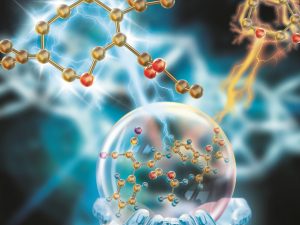Biology
- Description
- Curriculum

The Study of life
| i)Properties of Life |
| ii)Levels of Organization |
| iii)Diversity of Life |
Surprised to see Chemistry in Biology? Actually chemistry makes life possible. Would you believe that we have approximately 60 elements within our body? Learn more about what they do and how they help us.
| i)Atoms, Isotopes, Ions and Molecules |
| ii)Water |
| iii)Carbon |
Carbohydrates, lipids, proteins and nucleic acids are the basic biological macromolecules. Macro – because they are very large molecules made up of subunits. Find out what they do.
| i)Carbohydrates |
| ii)Lipids |
| iii)Proteins |
| iv)Nucleic Acids |
Cells
| i)Cell- The Basic Unit of Life |
| ii)Microscopy |
| iii)Cell Theory |
| i)Prokaryotic Cells |
| ii)Eukaryotic Cells |
| iii)The Endomembrane System |
| iv)The Cytoskeleton |
| v)Connections between Cells and Cellular Activities |
This membrane is like a fence around the cell. It physically separates the components within the cell from the external environment. In spite of this, certain substances still find their way in or out of the cells. How?
| i)Components and Structure |
| ii)Passive Transport |
| iii)Active Transport |
| iv)Bulk Transport |
Ever wondered how plants eat? Well most of them make their own food, especially the green ones. This is called photosynthesis and is performed by specialized cells. Like all other living things, cells too breathe but in a different way. Find out more.
| i)Light-dependent Reactions |
| ii)Light-independent Reactions |
| iii)Cellular Respiration |
| i)Signalling Molecules (Paracrine, Autocrine, Endocrine) |
| ii)Cellular Receptors |
| iii)Response to Cellular Signal |
| iv)Signalling in Single-celled Organisms |
| i)Cell Division |
| ii)Cell Cycle |
| iii)Prokaryotic Cell Division |
| iv)Meiosis |
Genetics
| i)Mendel’s Experiments |
| ii)Laws of Probability |
| iii)Patterns of Inheritance |
| iv)Laws of Inheritance |
| i)Chromosomal Theory |
| ii)Genetic Linkage |
| iii)Karyotypes |
| i)Disorders in Chromosome Number |
| ii)Chromosomal Structural Rearrangements |
| iv)X-Inactivation |
| i)DNA Structure and Sequencing |
| ii)DNA Replication |
| iii)DNA Repair |
| i)The Genetic Code |
| ii)Eukaryotic Transcription |
| iii)RNA Processing |
| iv)Ribosomes and Protein Synthesis |
| i)Biotechnology |
| ii)Cloning |
| iii)Genetic Engineering and GMOs |
| iv)Biotechnology in Medicine |
| v)Vaccines, Antibiotics and Hormones |
Evolution and Origin of Species
| i)Charles Darwin and Natural Selection |
| ii)Processes and Patterns of Evolution |
| i)Reproductive Isolation |
| ii)Speciation |
| i)Fossil Formation and Record |
| ii)Vestigial Structures |
beaks. So finches with the bigger beaks became the more dominant population.
| i)Population Genetics |
| ii)Genetic Variation |
| iii)Genetic Drift |
| iv)Gene flow and Mutation |
| v)Adaptive Evolution |
| i)Phylogenetic Tree |
| ii)Levels of Classification |
| iii)Similar Traits |
Viruses
| i)Viral Morphology |
| ii)Virus – Classification |
| i)Steps in Viral Infection |
| ii)Bacteriophages |
| iii)Animal Viruses |
| iv)Plant Viruses |
| i)Vaccines and Immunity |
| ii)Anti – Viral Drugs |
Classification of Living Things
| i)Archaea and Bacteria |
| ii)Extremophiles and Biofilms |
| iii)Structure and Reproduction |
| iv)Bacterial Diseases in Humans and Antibiotics |
| v)Beneficial Prokaryotes and Bioremediation |
| i)Cell Structure and Motility |
| ii)Habitats |
| iii)Food Sources and Symbionts |
| iv)Plant and Human Pathogens |
| i)Characteristics, Structure and Function |
| ii)Reproduction |
| iii)Decomposition and Recycling |
| iv)Mutualistic Relationships and Fungivores |
| v)Fungal Parasites and Pathogens |
| vi)Importance in Human Life |
| i)Seedless Plants |
| ii)Gymnosperms |
| iii)Angiosperms |
| iv)Plant Biodiversity |
| i)Characteristics and Classification |
| ii)Invertebrates |
| iii)Vertebrates |
| i)Fishes |
| ii)Amphibians |
| iii)Reptiles |
| iv)Birds |
| v)Mammals |
Physiology
| i)Plant Body |
| ii)Plant Development |
| iii)Transport of Water and Solutes |
| iv)Plant Sensory Systems and Responses |
| v)Plant Defense Mechanisms |
| vi)Plant Nutrition |
| vii)Adaptations |
| i)Reproductive Development and Structure |
| ii)Sexual Reproduction in Gymnosperms and Angiosperms |
| iii)Pollination and Fertilization |
| iv)Asexual Reproduction |
| v)Plant Life Spans |
| i)Form and Function |
| ii)Primary Tissues |
| iii)Homeostasis |
| iv)Animal Nutrition |
| i)The Gastrointestinal Tract and Digestive Glands |
| ii)The Digestive Process |
| iii)Digestive System Regulation |
| iv)Nutrition and Energy Production |
| i)Neurons and Glial Cells |
| ii)Neuron Communication |
| iii)The Central and Peripheral Nervous Systems |
| iv)Nervous System Disorders |
| v)Sensory Processes and Somatosensation |
| vi)Taste and Smell |
| vii)Hearing and Vestibular Sensation |
| viii)Vision |
| i)Hormones and How they Work |
| ii)Regulation of Body Processes |
| iii)Regulation of Hormone Production |
| iv)Endocrine Glands |
| i)Skeletal Systems |
| ii)Bones |
| iii)Joints and Skeletal Movement |
| iv)Muscle Contraction and Locomotion |
| i)The Respiratory Apparatus |
| ii)Breathing Mechanism |
| iii)Transport of Gases |
| iv)Exchange of Gases |
| i)Role of the Circulatory System |
| ii)Components of Blood |
| iii)The Heart and Blood Vessels |
| iv)Blood flow and Regulation of Blood Pressure |
| i)Osmoregulation and Osmotic balance |
| ii)Nitrogenous Waste and Excretion systems |
| iii)Human Excretory Systems |
| iv)Hormonal Control of Osmoregulatory Functions |
| i)Innate Immune Response |
| ii)Adaptive Immune Response |
| iii)Antibodies |
| iv)Disruptions in the Immune System |
| i)Reproduction Methods and Fertilization |
| ii)Human Reproduction-Anatomy and Gametogenesis |
| iii)Hormonal Control-Human Reproduction |
| iv)Fertilization and Early Embryonic Development |
| v)Organogenesis and Vertebrate Formation |
| vi)Human Pregnancy and Birth |
Ecology and Biosphere
| i)Ecology |
| ii)Organismal and Population Ecology |
| iii)Community and Ecosystem Ecology |
| i)Biogeography |
| ii)Energy Sources |
| iii)Temperature and Water |
| iv)Abiotic Factors |
| i)Tropical Wet Forests and Savannas |
| ii)Subtropical Desserts and Chaparrals |
| iii)Temperate Grasslands |
| iv)Temperate Forests |
| v)Boreal Forests and Arctic Tundra |
| i)Marine Biomes |
| ii)Estuaries |
| iii)Freshwater Biomes |
| i)Climate and Weather |
| ii)Causes and Evidence of Climate Change |
| iii)Past and Present Effects of Global Climate Change |
| i)Population Demography |
| ii)Environmental Limits to Population Growth |
| iii)Human Population Growth |
| iv)Community Ecology |
| v)Innate Animal Behavior |
| vi)Learned Animal Behavior |
Ecosystems
| i)Ecosystem Dynamics |
| ii)Food Chains and Food Webs |
| i)Trophic Levels |
| ii)Ecological Pyramids |
| iii)Biomagnification |
| i)Water Cycle |
| ii)Carbon Cycle |
| iii)Nitrogen Cycle |
| iv)Phosphorus Cycle |
| v)Sulfur Cycle |
Conservation Biology and Biodiversity
| i)Loss of Biodiversity |
| ii)Types of Biodiversity |
| iii)Change through Geological Time |
| iv)Human Health and Biodiversity |
| v)Agricultural Diversity |
| vi)Managing Fisheries |
| i)Habitat Loss and Sustainability |
| ii)Overharvesting |
| iii)Exotic Species |
| iv)Climate Change |
| i)Measuring Biodiversity |
| ii)Changing Human behavior |
| iii)Ecological Restoration |



